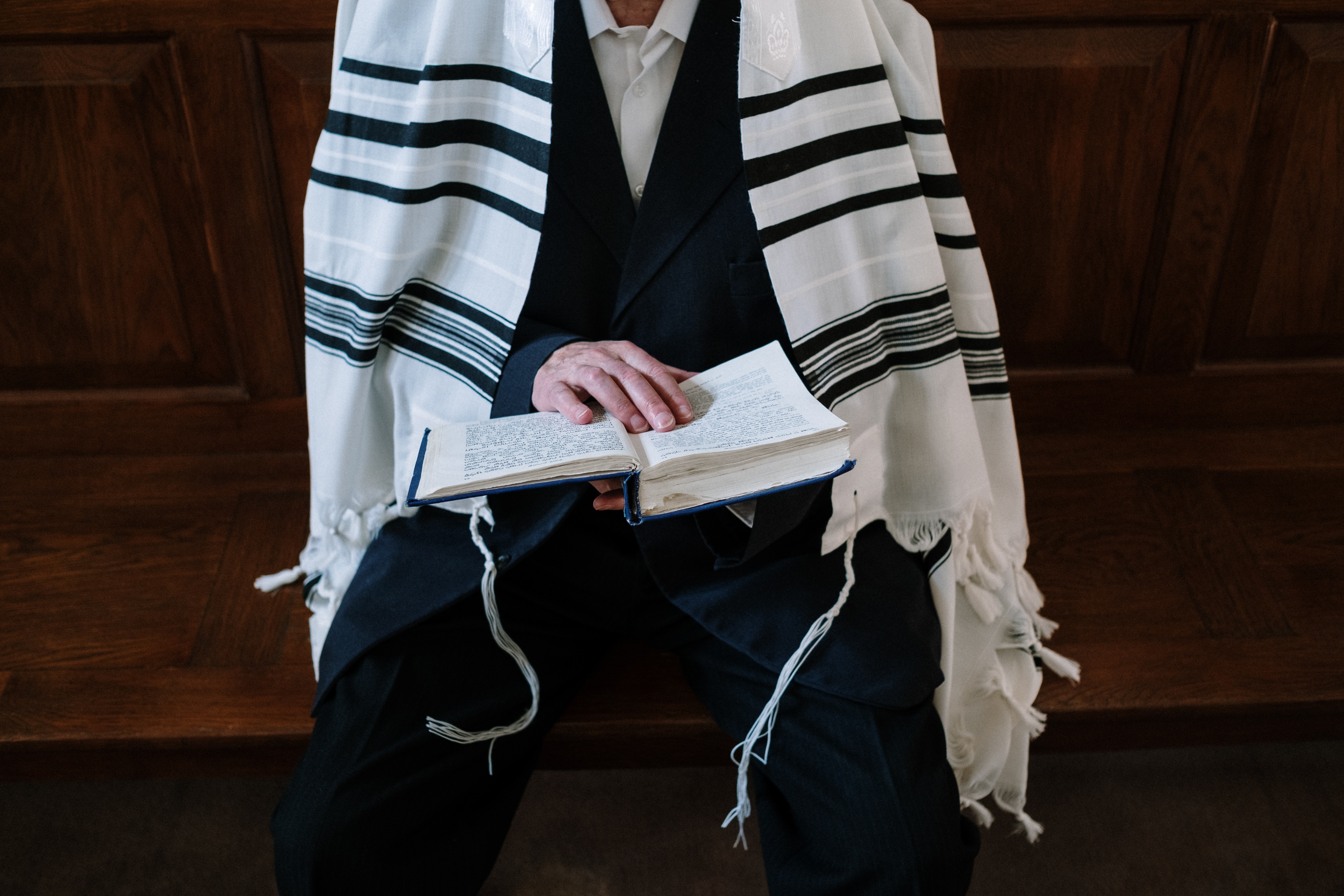To a 21st Century individual, the word “phylactery” isn’t commonplace. Tassels are more widely recognized, but usually as the fringe of a scarf or rug. What do these things have to do with the Pharisees, and what do they mean for us today?
Briefly, phylacteries are small leather boxes which continue to be worn by Conservative and Orthodox Jews, generally during morning prayers. In Jesus’ day, phylacteries were likely worn by the Pharisees throughout the day and only removed for sleeping or other special circumstances as detailed in the Law. There are two phylacteries, one worn on the forehead and the other on the non-dominant arm. Inside the boxes are written four Scripture verses from the Books of Exodus and Deuteronomy. Phylacteries literally bind the Word of God to a person’s head and arm, signifying how Scripture should fill our minds and guide our hands. While the length of the straps, the type of leather, coloring, and even the knots used to attach the phylacteries are all specifically laid out, there are only minimal guidelines for the size of the boxes.
The tassels served a similar purpose. Each corner of a person’s garment was supposed to have a tassel attached to it, reminding a person that God surrounds them and they were to uphold His commandments. As the tassels brushed against a person’s legs while walking, they served as a constant reminder that they were a people set apart. Interestingly, just as there was no guideline for the dimensions of the phylacteries, no tassel length was prescribed.
What does all of this have to do with our Gospel? Jesus is challenging both the Pharisees and us to consider our behavior and our choices. The Pharisees were increasing the size of their phylacteries, drawing attention to themselves in a, “Look how holy I am,” sort of way. Lengthening their tassels had a similar effect. While Jesus’ audience would have immediately grasped at the nuances of His criticism, it might be harder for today’s readers. Consider some ideas that we could substitute for phylacteries and tassels:
– A person can afford a large, diamond encrusted cross necklace, or they can purchase a simpler one and donate the difference.
– Someone can bring up in every conversation the fact that they go to daily Mass, or they can pray a rosary every day in private.
– During Lent, a friend can continue to remind others of what they are fasting from and how challenging it is, or they can fast from judging others.
Jesus is deeply interested in how we spend our time and our money. He is deeply interested in the way we talk about our faith and the way we live out our faith day in day out.
Para una persona del siglo XXI, la palabra “filacteria” no es muy común. Las franjas son más conocidas, pero generalmente como flecos de una bufanda o una alfombra. ¿Qué tienen que ver estas cosas con los fariseos y qué significan para nosotros hoy?
Brevemente, las filacterias son pequeñas cajas de cuero que los judíos conservadores y ortodoxos siguen utilizando, generalmente durante las oraciones de la mañana. En los días de Jesús, los fariseos probablemente usaban filacterias durante todo el día y solo se las quitaban para dormir u otras circunstancias especiales, como se detalla en la Ley. Hay dos filacterias, una que se lleva en la frente y la otra en el brazo no dominante. Dentro de las cajas están escritos cuatro versículos de las Escrituras de los libros del Éxodo y Deuteronomio. Las filacterias literalmente atan la Palabra de Dios a la cabeza y al brazo de una persona, indicando que las Escrituras deben llenar la mente y guiar las manos. Si bien la longitud de las correas, el tipo de cuero, el color e incluso los nudos utilizados para sujetar las filacterias están establecidos específicamente, sólo existen pautas mínimas para el tamaño de las cajas.
Las franjas tenían un propósito semejante. Se suponía que cada esquina de la prenda de una persona tenía una franja adherida, recordándole que Dios la rodeaba y que debía guardar sus mandamientos. Cuando las franjas rozaban las piernas de una persona mientras caminaba, servían como un recordatorio constante de que eran un pueblo apartado. Curiosamente, así como no había una guía para las dimensiones de las filacterias, tampoco se prescribía la longitud de las franjas.
¿Qué tiene que ver todo esto con el Evangelio de hoy? Jesús está desafiando tanto a los fariseos como a nosotros a considerar nuestro comportamiento y nuestras decisiones. Los fariseos estaban aumentando el tamaño de sus filacterias, llamando la atención sobre sí mismos en una especie de “mira qué santo soy”. Alargar sus franjas tuvo un efecto semejante. Si bien la audiencia de Jesús habría captado inmediatamente los matices de su crítica, podría resultar más difícil para los lectores de hoy. Consideremos algunas ideas que podríamos sustituir por filacterias y franjas:
– Una persona puede permitirse un collar de cruz grande con incrustaciones de diamantes o puede comprar uno más sencillo y donar la diferencia.
– Alguien puede enfatizar en cada conversación el hecho de que va a Misa diaria, o puede rezar un rosario todos los días en privado.
– Durante la Cuaresma, un amigo puede seguir recordándoles a los demás de qué están ayunando y lo difícil que es, o pueden dejar de juzgar a los demás.
Jesús está profundamente interesado en cómo gastamos el tiempo y el dinero. Está profundamente interesado en la forma en que hablamos de nuestra fe y en la forma en que vivimos nuestra fe día tras día.
 Kate Taliaferro is an Air Force wife and mother. She is blessed to be able to homeschool, bake bread and fold endless piles of laundry. When not planning a school day, writing a blog post or cooking pasta, Kate can be found curled up with a book or working with some kind of fiber craft. Kate blogs at DailyGraces.net.
Kate Taliaferro is an Air Force wife and mother. She is blessed to be able to homeschool, bake bread and fold endless piles of laundry. When not planning a school day, writing a blog post or cooking pasta, Kate can be found curled up with a book or working with some kind of fiber craft. Kate blogs at DailyGraces.net.
Feature Image Credit: cottonbro studio, pexels.com/photo/a-person-in-a-tallit-reading-a-chumash-5974346/

